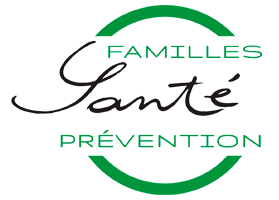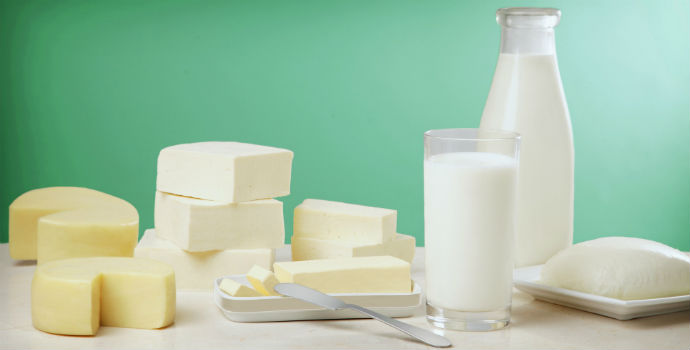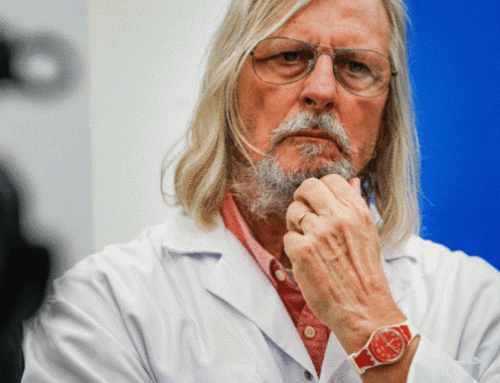Relationship Between Dairy Consumption and Various Health Conditions
Dear friends,
Dairy has become a controversial food. These days, many people are told to give up dairy partially or totally to resolve some health issues such as ezcema and autoimmune conditions. However, for decades, we have been told that dairy was an essential food and that we should consume it at every meal so as to have strong bones. So what is going on? Why do some people have to give it up? Was the science wrong all this time, or do some people simply poorly digest or best dairy-based food? Could it be a modern manugacturing problem? We will try to respond to questions, and to address the long term effects of dairy on our health. We also will explain to you how you can get solid bones without dairy.
In the “dairy” category, we include products derived from animal milk (not breastmilk): cow’s milk, goat’s, sheep’s and less frequently camel’s milk, but not eggs.
We include milk and all milk-derived products : butter, milk, creams, yoghurts, cheeses, ice-cream and milk-based deserts, etc.
Dairy has lot of CALCIUM. And judging from the insistence of all nutrition authorities and experts that we get calcium from dairy consumption derives the widespread belief that only dairy consumption will provide sufficient calcium intake.
We unconsciously infer that dairy is the only calcium-providing food. So much so that we are told if we don’t have it, we have or will have growth issues for children, and bone loss issues in the future, such as osteoporosis. We are then proposed a treatment for old age osteoporosis. This is forgetting that all animal providing milk are naturally grass-eaters. So, is dairy the only reliable source, and is it a reliable source of calcium at all ?
But calcium comes from different sources: animal but also vegetable sources. We will discuss the better availability of vegetable calcium, and the fact that breastmilk contains four times less calcium than cow’s milk. Following, our human digestive tract absorption capacity for calcium is four times inferior than animals’ digestive tracts. Making humans consume animal dairy is bringing into our digestive tract at least 3 times too much calcium.
THE NUTRITIONAL QUALITIES OF DAIRY
Dairy is rich in many things – in particular lactose and proteins – but it is most famous for calcium. Let’s work these preconceptions one by one.
Mostly, Dairy Has Calcium
Humans have a lot of issues with animal milk digestion. They also suffer from allergies, CMPA (cow’s milk protein allergy), skin issues (rashes, acne). This is not only an allergy to milk protein. And what is sure is that there is too much calcium and too much sugar with lactose.
We forget to compare dairy calcium it with the calcium from others sources. Vegetable calcium is in everything else: fruits and vegetables, and legumes. If we chew greens and fruits thoroughly, their calcium is absorbed up to 70%-75% (compared to estimation of the dairy lobby who says up to 40% of animal dairy calcium is absorbed by humans), and very useful to bone system growth and maintenance. Calcium that isn’t well absorbed will be evacuated in the urine, and in the case of leaky gut, it will pass through the gut barrier which could cause serious health issues (chronic inflammation in different organs – breast, muscles, pancreas, digestive tract, and may be brain).
Our digestive tract is meant to absorb the amount of calcium that is contained in human breastmilk. There is four times more calcium in animal dairy than in breastmilk. This suggests that animal calcium isn’t the key to bone system maintenance. Besides, we know that Scandinavian (northern European) women, who consume a lot of animal dairy, have the highest prevalence of osteoporosis. This suggests consumption of high amounts of dairy won’t prevent osteoporosis.
Animal Dairy: The Very Complex Composition of Animal Dairy Products
The Absorption of Nutrients from Dairy Requires A Very Specific Type of Digestive Tract
The role these nutrients is to help the animal take a lot of weight very fast: a veal grows up to half a ton or more at year one: the equivalent of 1kg/2.2 lbs per day during first life year !
What explains why we humans don’t digest cow’s milk well?
Cow’s milk has too much medium chain fatty acids, which are saturated fats. This quantity impedes on the absorption of this calcium, which explains why the absorption rate of dairy calcium is 40% in the best of cases (this is a very optimist assessment largely relied upon by the dairy industry). Obviously, leaky gut enables the abnormal passage of calcium through the gut barrier.
Lactose is milk sugar. It is present in human breastmilk and it is important to the growth of small mammals. Human breastmilk is very interesting because it is richer in lactose than cows’ milk: two to three times richer than cow’s milk.) Lactose promotes energy storage and growth of the baby. Therefore, babies that have lactose intolerance (very rare) have serious growth problems. This intolerance increases in the adult, which shows that our human needs for lactose decrease with age.
Bottomline, having an issue with lactose means one has a digestive issue, i.e. we don’t have the enzyme that breaks it down, lactase. This enzyme breaks down lactose into glucose and galactose. Consequently, if we can’t break lactose down, lactose stays in the guts, ferments, provokes bloating, gas with foul odor, and acceleration of transit (diarrhea).
So, is lactose intolerance only a milk intolerance issue? No.
It can apply to the digestion of yogurt and milk, and cheeses that haven’t been aged long enough. Aging permits fermentation of the cheese (on the shelf) and break-down of lactase in the cheese rather than in our body.
So hard cheese that has been aged 12 months and over usually contains no lactose or very little.
Also, yogurt is easier to digest because it is fermented. However, to make its consistency smooth, the industry adds powdered milk, which is hard on our digestive systems. On the other hand, home-made yogurts will be low in lactose unless you add powdered milk as well.
So more often than not, issues with dairy digestion are not a problem of lactose tolerance, it’s more a problem of capacity to break down a milk protein that is very complex.
Proteins That Make Up the Nutritious Quality of Milk
Here are the names of the proteins:
Some Powerful Protein Elements in Cow’s Milk: Animal Growth Factors
In Cow’s milk, which is the most commonly used and the most affordable one dairy product, there are 3 families if Growth Factors:
Let’s say it: Milk has a very complete nutritional profile. The problem is that it does demands a lot of work from our digestive system. Raw milk would require 3 hours in the human stomach to be broken down, because it’s fat. Fat is what slows down the digestion. So, the industry takes the fat out. Problem solved?
Sadly not: Defatting the milk “fastens” the digestion, but that’s because milk is not staying long enough in stomach to be digested and goes to fast in the gut. So, it provokes inflammation. This inflammation often becomes chronic because heavy dairy consumption is often associated with a decreased consumption of vegetables and fruits, which are essential to a healthy microbiome and strong immune defenses.
Do we need that much dairy? NO! Our family’s own small children don’t have milk and very little dairy, and have no growth problems. The industry is, understandably, using the nutritious advantage of dairy to sell and to sell more and more of its products.
Fats in Dairy
Fatty acids vary in dairy products.
For example, there are 82% fatty acids in butter, and Brillat Savarin cheese has 75% fatty acids… Levels depend on the manufacturing method.
Dairy have different fatty acid profiles: most fatty acids are saturated. Our adult human bodies can manufacture it fairly easily. For example, if we eat or drink too much sugar and alcohol, we manufacture and store it in our fat tissue. And this is not healthy. Eating lots of dairy means eating a lot of saturated fats and consequently cardiac and/or vascular problems.
Bottomline: the low quality of fatty acid and low digestibility suggests that we should consume high quality dairy in small quantity. As the old wisdom says, “the dose makes the poison”.
How much is not too much? It depends. Some people consume 3-4 servings of dairy with no problem, some people don’t tolerate any without having very hard joint pain. However, 1-2 portion of quality dairy per day, not every day, rarely disturbs anyone. Besides, digestibility is different depending on the animal the product is made of: sheep and goats products contain less Growth Factors than cow’s milk products. The protein quality makes it a little easier to digest.
So, how do you maintain your bone tissue? Use the bone tissue by exercising, hiking, walking, moving, that’s the best way to maintain and strengthen your bone tissue.
Vitamins and Trace Elements in Dairy
Micronutrients in milk.
Originally it is a very complete food.
Raw milk – on the day the cow was milked, contains:
- Vitamins D, E, and A;
- Vitamin B12 (which is good for vegetarians and would be missed by vegans);
- Trace minerals and oligo elements: Zinc, iron, selenium, iodine.
However, every step of transformation will change/ decrease nutritional contents.
Example: Pasteurization alone destroys 50%- 55% of bioavailable iodine.
Vitamins that are the most sensitive to transformation: vitamins E and A disappear pretty fast.
Other oligo elements you can find elsewhere: iron (in fish and meat), selenium (in fish, nuts eggs, meats).
Acidifying or Alkalinizing Qualities of Milk
In food, what alkalinizes is potassium, not calcium (calcium alkalinizes only indirectly).
There isn’t much potassium in milk. Usually milk provides protein, which has calcium and that calcium can temporarily alkalinize the lower esophagus and stomach. However, it requires a lot of digestive work. Ultimately, too much dairy will bring about too much acidity, and the protein itself will acidify your tissues. Milk may tone down stomach burns, but only temporarily, while increasing the risks of seeing helicobacter pylori develop in gut cells.
That’s what triggers reflux: stomach liquid, which is very acidic because the stomach is overworked, crashes against the Pylori (at the bottom of the stomach) which remains closed as long as the food is not ready to go further down because it hasn’t been broken down enough. This conflict between the acidic fluid and the pylori causes the stomach to contract and the liquid to go back up and burn. Hence the chronic burns at the junction of the stomach and the esophagus, which paves the way to esophagitis, ulcer, or also cancer. Milk isn’t the cause. It’s because we eat too much, we don’t prepare the foods enough for digestion by chewing thoroughly.
Gastroenterologists verify patients suffer from such problems with endoscopy and biopsies if necessary. What oftentimes is missing in this field, rather than giving an antacid, is the nutritional explanation that would prevent reoccurrence.
Dairy in Daily Nutrition
Milk in the morning is hard to digest. Here is our suggestion for a dairy-free breakfast. Use baking cocoa mixed with hot water sweetened if need be with raw honey. With that, eat a slice of bread with olive oil and salt. It is most digest to the stomach, the stomach feels lighter. You can eat this along with fruits, nuts, an egg with runny yolk.
For people who want to keep eating dairy, better eat some goat milk, if you want a dairy in the morning. Also have a fruit, some nuts, some olive oil (the Mediterranean way). You will use these fats, and you won’t have much glycemic ups and downs.
You can make your nut milk a few days in advance. (It is much more nutritious than bought in store, and does not have additives). You can eat eggs for protein (ovalbumin). Carbs are not the only source of energy, as the traditional French breakfast has led us to believe. Proteins are used better by the body and you can avoid hypoglycemia at ten in the morning.
When do followers of chrono nutrition eat dairy?
Fat combined with protein in the morning tends to stabilize glycemia.
What about Kefir? Real (homemade) yogurt?
The method of lacto-fermentation helps digesting lactose, and brings about good bacteria. But you won’t find such good bacteria in industrial yogurt and kefir. If you can, make it home.
THE EFFECTS OF DAIRY ON SPECIFIC CONDITIONS
Does dairy cause cancer?
There is no equation that links statements “I have dairy” to “I will get cancer”.
However, an excessive consumption of dairy means that big quantities of calcium pass in digestive tract that can be irritating. Irritation of the colon or rectum or anywhere in the body, if the calcium stagnates in the distal digestive tract i.e. right, left colon, transverse, sigmoid or rectum, is creating Irritation.
Irritation at any location in the body will end up triggering health conditions, for example a polyp in the colon. Most patients I have seen with a polyp (a benign tumor) eat too much dairy and not enough fibers from fruits and vegetables. What it means is just TOO MUCH dairy.
Now suppose that calcium goes beyond the gut barrier, because you have a leaky gut, because you have been consuming bad gluten from today’s bad wheat used for breads, pasta and countless foods. If the junctions in the lining of the gut aren’t normally tight any more, the calcium goes through the gut barrier into to the blood flow, and everywhere, you will find calcium not far from the bone: in joint cartilage.
If the cartilage calcifies (hardens and makes joints difficult to work), calcium can move to the pancreas, mammal glands, prostate, brain too etc.
If it goes to the female mammal glands, you find microcalcifications. These may be from breastfeeding, in which case it can be a breastmilk residue: there is no danger.
Other types of microcalcifications in the breast can be analyzed: there can be cancerous cells, or there is a dysplasia (anomaly) which is not necessarily cancerous. It can be for an excess consumption of dairy. Stopping dairy won’t make such macrocalcifications disappear but will have to be monitored (mammograms). What is necessary is to switch to an anti-inflammatory nutrition.
New research suggests that there is also a passage of the blood-brain barrier. This barrier is meant to allow for some nutrients needed by the brain to be distributed to the brain: fatty acids, sugars, etc. The fact is that excess calcium can act as an extinctor of the nerve influx; excess calcium keeps the myelin from sticking around the axon of the nerve fiber. If there is not enough myelin, there will be no flux. Multiple sclerosis is just that: a problem of nerve flux, commanding nerves to react to the brain.
The population based in the United States has even more reasons to stay away from conventional cows’ dairy, as most of the cow’s milk and milk-derived products stem from animal grown with growth factors and heavily treated with antibiotics. This does not even count GMO-corn-based nutrition. If the milk itself isn’t a GMO, or the cow isn’t a GMO, everything else about cow’s milk is GMO based. And ever since the start of GMO development and commercialization, its history is plagued with false reports about its safety for human consumption. Let us ask if hormones that make animal sick and require heavy use of antibiotics can reasonably be considered safe to heavy human consumption.
William Engdahl 2007 book “GMO, seeds of destruction” [1] already underlines the fact that cows grown with GMO developed rBGH (recombinant bovine growth hormone) growth factors manufacture milk with a higher concentration of IGF1, that had at the very least incidence on cancer. The Center for Food Safety summarizes the problem in simple and clear words:
“In cows treated with rbGH, significant health problems often develop, including a 50% increase in the risk of lameness (leg and hoof problems), over a 25% increase in the frequency of udder infections (mastitis), and serious animal reproductive problems, such as infertility, cystic ovaries, fetal loss and birth defects. Because rbGH use results in more cases of mastitis, dairy farmers tend to use more antibiotics to combat the infections, the residues of which also may end up in milk and dairy products. These residues can cause allergic reactions in sensitive individuals and contribute to the growth of antibiotic resistant bacteria, further undermining the efficacy of some antibiotics in fighting human infections.” [2]
American center for food safety provides a list of dairy from cows free of rBGH available here .
Allergies, Leaky Gut, Rheumatoid Arthritis, Joint Issues
Too much dairy and not enough fruits and vegetable are responsible for a putrefaction-type flora. This maintains chronic inflammation and ultimately creates leaky gut.
Dairy is not directly responsible, it’s the excess of consumption. Leaky gut is the start of autoimmunity. Gut imbalance is where allergies start. Therefore, there is a relation between autoimmune conditions and allergies.
Any animal protein can putrefy, it’s a question of dosage. If the consumption is reasonable and we have plenty of fruits and vegetables (fibers), putrefaction should not develop. We need to chew, we need to adopt a predominantly vegetable-sourced diet.
A diet that heavily relies on industrial dairy, and also on industrial animal products is heavy in inflammatory fatty acids. Such nutritional profile cultivates inflammation.
Conversely, the Mediterranean Diet is not as inflammatory because it brings in a lot of foods that are anti-inflammatory into the mix that keep inflammation at bay (various fruits and vegetables, extra virgin olive oil, grapes, polyphenol in wine, fish, etc). They allow for an anti-inflammatory regulation.
Calcifications are the result of an inflammatory phenomenon.
One example: Atherosclerosis is a disease in which plaque made of fat, cholesterol and calcium builds up inside your arteries: It is not caused by dairy. It’s due to high blood pressure, obesity, stress, alcohol. Vascular inflammation triggers the formation of atheroma plaque which is composed of 10% cholesterol. But it is also made of calcifications.
Not to say that calcium is responsible for heart disease, but neither is cholesterol. Inflammation is what causes a bad metabolism of cholesterol. Therefore, a reasonable consumption of dairy, associated with an anti-inflammatory diet, will not be problematic.
Let’s take a real-life example. On a trip to Sweden in the 1980s when I was young surgeon, there was a large population of young people (12-to-17-years-olds) that had what I thought was appendicitis. I was wrong. It was Crohn’s disease. They were hospitalized. There were also many ulcerative colitis cases (inflammation of rectum and colon). I thought they might have different nutritional habits.
What I noticed, but I didn’t link to the problem, was the enormous amounts of dairy that the Swedes ingested as a habit (several servings per meal), and the absence of some foods that are present in the Mediterranean diet and are anti-inflammatory (olive oil, red wine, fish, etc). At the time, dairy products were not advertised as much as necessary to the prevention of osteoporosis, but in Sweden, they were part of cultural nutritional habits. Since then, times have changed the western diet is very dairy oriented.
Gastroenterology practices are full of the same type of patients that we could help heal first through nutritional advice, only at the beginning of their ailment. The only solution is to change their nutritional habits and switch to an anti-inflammatory diet. The best thing is, this is a very economical treatment!
Our bone system maintains itself alone by being used, by moving, not by eating yogurt.
If your child doesn’t like unprocessed food, make sure only that is available (fruits, nuts, water in big baskets), and their taste buds will change and come to love unprocessed and healthier foods! Then, they won’t need osteoporosis treatment. Let us just say that generalized osteoporosis is a myth constructed by Big Pharma. It developed through marketing campaigns, targeting women first, and now men.
Osteoporosis
Osteoporosis, in the vast majority of the time, can be prevented with nutrition and physical activity. But this is not the trajectory of public health discourse today.
I can’t bear therapeutic abuse, for example the prescription of treatment against osteoporosis to patients that don’t need them. They are pushed by the industry and by protocols imposed by the medical associations, which are not independent from the pharmaceutical industry. Physicians are competent, have their knowledge and their conscience, that’s all they need to take care of patients.
Osteoporosis can be caused by a few things:
What about taking calcium supplements to treat an early osteoporosis?
The best means of preventing osteoporosis is to move, be more athletic, which reinforces the bone structure and do not forget being exposed to sunlight to naturally manufacture vitamin D.
Make sure to have enough potassium and magnesium and to adopt a mostly-vegetable based nutrition. Vegans rarely have osteoporosis issues!
How do you know you have enough calcium?
Not with blood work. It doesn’t reflect bone calcium levels. Doctors now are generalizing osteodensitometry, which measures bone density to find out if you have an early osteoporosis. The problem is that their parameter is a bone structure of a 20-25 year-old. Anyone older would have a bone structure that isn’t as healthy as the one of a 20-y-o. So, this can be a useful exam, but it is overused. Osteoporosis has been generalized, as if any woman with a little joint paint would have osteoporosis.
Remember: We don’t need animals milk every day. We are the only mammals species still drinking milk as adults.
Vegetal sources of calcium: All vegetables have calcium, especially nuts (hazelnuts, almonds, walnuts), seeds (pumpkin seeds, sunflower seeds), legumes. If you eat high volumes of fresh fruits (not sauce and heavily sweetened fruit spreads) and vegetables, your calcium levels will be optimal. Unless you aren’t used to eating fruits and vegetable any more, in which case you should start very progressively, you shouldn’t have problems.
What are the signs of dairy sensitivity? Some patients have migraines that resist medication and disappear with suppression of dairy. Most times it’s a liver issue. Also, tinnitus is a mid or inner ear inflammation which causes ringing in the ear. Most times, it is an old age problem. Many elderly people have that problem, but also if you look closely at diets in retirement homes, dairy is abundant…
A 2019 study from the British Journal of Nutrition[3] concludes that no study has demonstrated that dairy consumption diminishes osteoporosis. Nothing demonstrates that it helps preventing calcium deficiencies[4] nor bone fractures.[5]
The most efficient preventative measure is to 1- Change the Way You Eat: Eat Better and Healthier) and 2- more movement to maintain the bone tissue. Any exercise works (pilates, aerobic) help to fight osteoporosis, solidify bone tissue. It works. Athletic people have less fractures. Make your body in a position to fall and find its balance to avoid falling. The elderly are more fragile because by moving less, they have less balance, so they are more prone to falling, which causes fractures. So, by moving, you will have less fractures. Movement is life. Humans can run as much as wolves (100km in one night), depending on training!
Dairy also contributes to our skin issues, such as eczema, psoriasis, acne – especially in the case of teenagers. Be aware than serious skin issues are only a symptom of deeper health issues. Along with skin problems, other symptoms can manifest themselves such as fertility and cycle irregularity issues in teenagers. Stopping your teenagers’ dairy consumption for a while, making sure their intake of magnesium and zinc are sufficient could calm the symptoms if not solve the problem of acne altogether, without resort to aggressive conventional treatments such as the pill and antibiotics. [6]
One of my young friends was treated for over a decade with antibiotics for acne that destroyed her cycle’s health. Physicians then treated her cycle’s problems by essentially stopping but also masking her symptoms with the pill. After stopping dairy completely and temporarily adopting a mostly vegan diet (except for a consumption of eggs, necessary for sufficient levels of cholesterol), her acne completely disappeared and her cycle went back to normal, with just nutrition and trust in the capacity of her body to manage itself.
Dairy is not the only food natures provides. Diversify! Let yourselves be surprised by all possibilities! That is what will keep you healthy and thriving! Physicians in France, like already decades ago my colleague Jean Seignalet,[7] and American physician Mark Hyman openly say it now: food is not like medicine, FOOD IS MEDICINE![8] Let it heal you.
Best wishes,
Henri Joyeux
MD, PhD, Professor of Surgery and Oncology, MONTPELLIER, FRANCE.
Jean Joyeux
Nutritionist, GENEVA, SWITZERLAND.
[1] William Engdahl, GMO, Seeds of Destruction, Montreal, Global Research, 2007.
[2] See https://www.centerforfoodsafety.org/issues/1044/rbgh/about-rbgh
[3] Sandra Iuliano and Tom R. Hill, “Dairy foods and bone health throughout the lifespan: a critical appraisal of the evidence” Br J Nutr. 2019 Apr 14; 121(7): 763–772. Published online 2019 Jan 14. doi: 10.1017/S0007114518003859
[4] Proponents of the “non-acid diet” contend even that a nutrition rich in fruits and vegetables would prevent calcium loss in urine because if its anti-acidic properties. See Jane E. Brody, “Exploring a Low-Acid Diet for Bone Health”,The New York Times, Nov. 23, 2009, https://www.nytimes.com/2009/11/24/health/24brod.html
[5] Burckhard P., Calcium revisited, part III: effect of dietary calcium on BMD and fracture risk, Bonekey Rep. 2015; 4: 708. Available at https://www.ncbi.nlm.nih.gov/pmc/articles/PMC4549924/
[6] See generally Lara Briden, ND, Period Repair Manual, Natural Treatment for Better Hormones and Better Periods, Greenpack Publishing,, 2nd Ed. July 2018.
[7] Jean Seignalet, L’alimentation ou la troisième médecine, Le Rocher, 21 juin 2012. See also article on this unbelievable physician and researcher one letter I published here: https://www.famillessanteprevention.org/en/uncategorized-en/unbelievable-seignalet-diet-2/
[8] Jeff St. Clair, “Food As Medicine: Cleveland Clinic’s Dr. Mark Hyman Preaches a Dietary Prescription for Health”, WKSU, Nov 27, 2017. published by NPR station WKSU Read at https://www.wksu.org/post/food-medicine-cleveland-clinics-dr-mark-hyman-preaches-dietary-prescription-health#stream/0
The Letter of Professeur Joyeux is an independent and free information service. It specializes in providing the wider public and families with disease prevention information.
This health information is provided free of charge by this organization and cannot be considered as personal medical advice. No treatment should be initiated solely on the basis of this content. It is strongly advised to consult a properly licensed health professional to seek responses with regard to one’s health and well-being. No information or product mentioned on this website is meant to diagnose, treat, atone or cure a disease.
You have a Personal Health Question? (Confidential response) or you wish to enjoy our exclusive services? Become an exclusive member of our association for one year by clicking HERE
You have a Personal Health Question (and a confidential response) ? Or you wish to enjoy our exclusive services? Become an exclusive member of our association for one year by clicking HERE.






